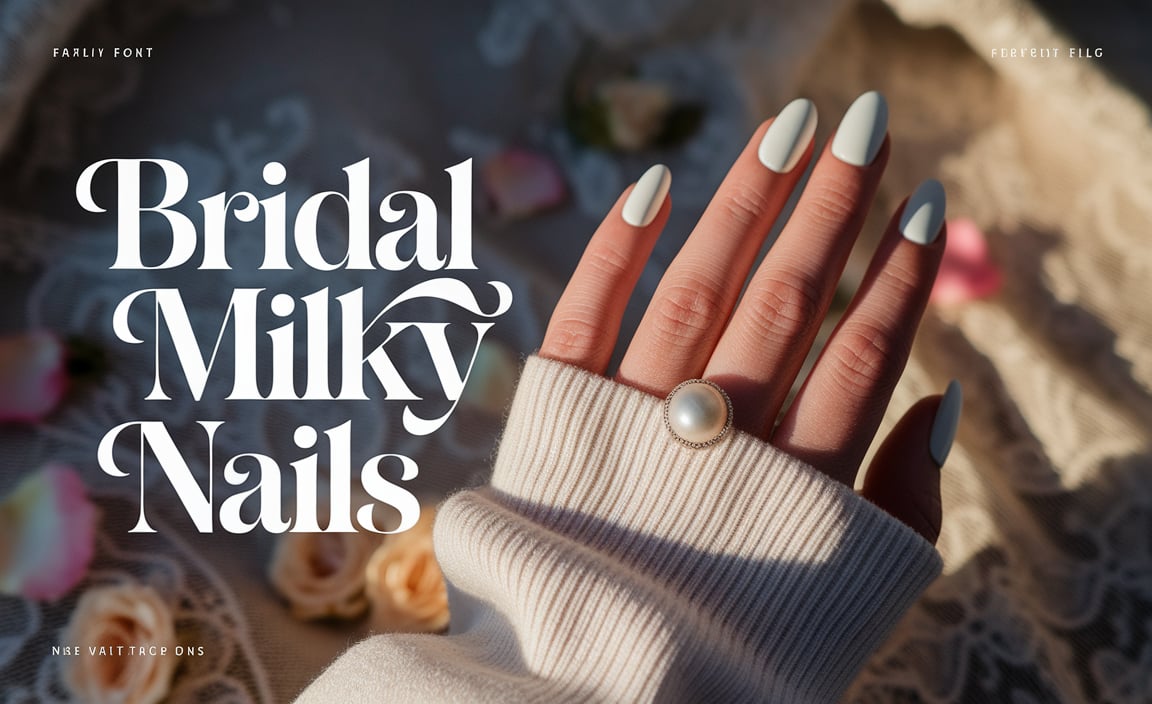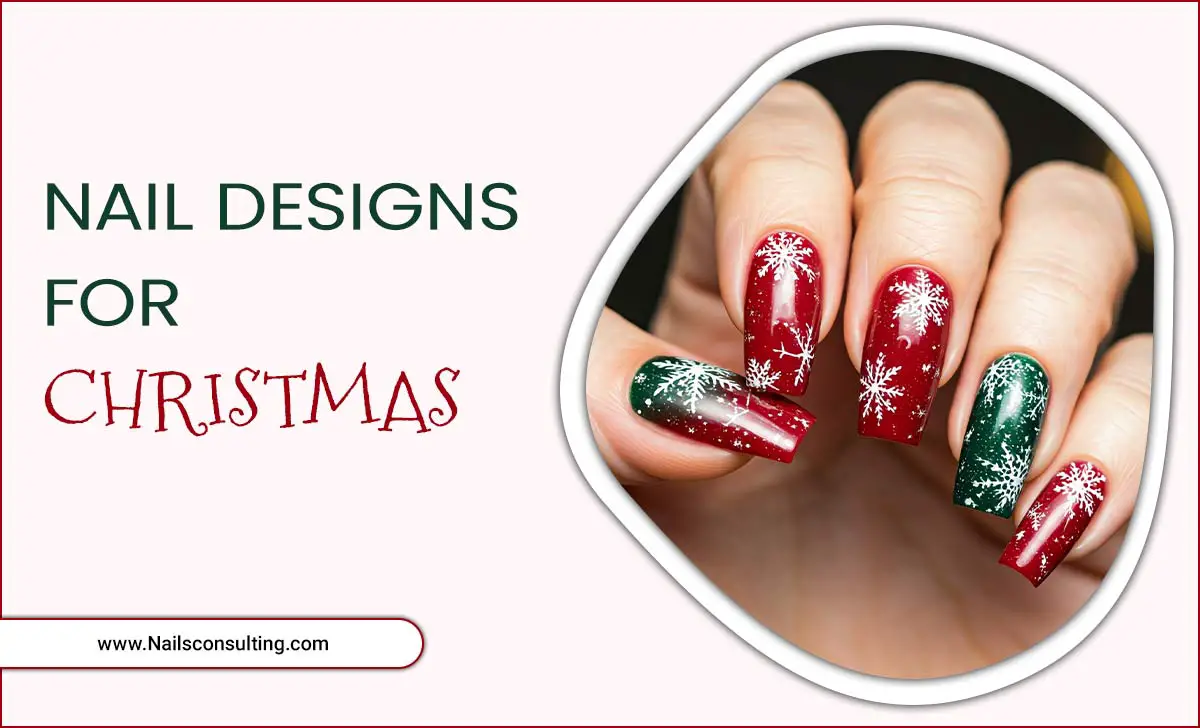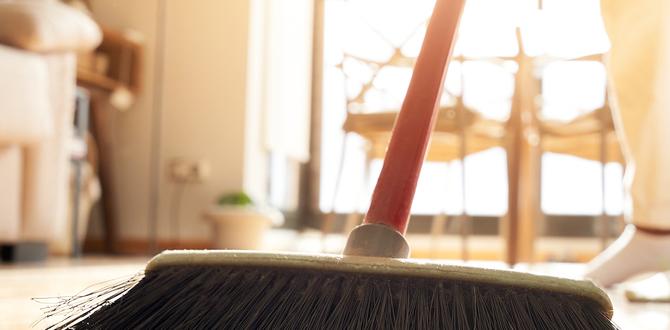Liquid Stone Nail Effect Tutorial: Genius & Essential
The liquid stone nail effect offers a sophisticated, textured manicure that looks incredibly high-end, like precious marble or natural geodes. This advanced yet achievable nail art technique creates a stunning, dimensional finish that perfectly captures the beauty of natural stone. Our beginner-friendly guide breaks down this genius technique step-by-step, making it accessible for everyone to achieve this essential, luxurious look at home.
Hey nail lovers! Lisa Drew here, bringing you another exciting nail art adventure from Nailerguy. Ever see those gorgeous nails that look like they’re carved from polished stone or shimmering minerals? That’s the magic of the liquid stone nail effect! It’s a popular trend because it adds such an elegant, unique touch to any manicure. But if you’re new to this, it might seem a little intimidating. Don’t worry! Today, we’re going to demystify this beautiful technique. We’ll walk through every single step so you can create these stunning nails yourself, no pro salon needed. Get ready to transform your nails into tiny works of art!
What is the Liquid Stone Nail Effect?
The liquid stone nail effect is a nail art technique designed to mimic the textures, patterns, and depth of natural stones like marble, agate, granite, or geodes. Unlike simple nail polish art, this effect uses specialized gel products and application methods to build up layers and create a realistic, 3D appearance. It’s often characterized by swirling patterns, translucent layers, and sometimes even the inclusion of reflective elements like glitter or foil to simulate mineral veins or sparkling inclusions.
This style is a fantastic way to elevate a simple manicure into something truly special. It’s versatile, too; you can go for a subtle, marbled look or a bold, geode-inspired statement. The beauty of it is that no two designs will ever be exactly alike, meaning your nails will be truly one-of-a-kind.
Why is the Liquid Stone Nail Effect So Genius & Essential?
The “genius” of the liquid stone nail effect lies in its ability to replicate complex natural beauty with relatively simple, albeit specific, techniques. It’s “essential” for beauty enthusiasts because it offers a high-fashion, sophisticated look that is surprisingly achievable at home. It’s perfect for those who want their nails to be a statement piece without being overly flashy. This effect provides a luxe, artistic vibe that pairs well with a wealth of fashion styles, from elegant evening wear to chic everyday looks.
Furthermore, it’s a fantastic way to practice and develop your gel nail art skills. Building depth and achieving smooth transitions are key components of many advanced nail designs, and this technique hones those abilities. It’s also incredibly customizable, allowing for endless color palettes and stone variations.
Essential Tools and Materials You’ll Need
Gathering the right supplies is the first step to success! For the liquid stone nail effect, you’ll want to work with gel products, as they offer the necessary viscosity and curing properties to build the stone-like layers. Here’s what you’ll need:
- UV/LED Nail Lamp: Essential for curing gel products. Make sure it’s powerful enough for your gels.
- Gel Base Coat: Prepares the nail and ensures adhesion.
- Gel Top Coat (No Wipe Recommended): Seals the design and provides a glossy finish without tackiness. A builder gel can also be used for added structure and depth.
- Color Gels: Choose your base color and accent colors. For a classic marble, white and black are popular, but you can use any combination! Consider translucent gels for depth.
- Detail Brushes: Fine-tipped brushes are crucial for creating delicate veins and patterns. A marbled effect or striping brush can also be helpful.
- Gel Polish Remover/Alcohol Wipes: For cleaning your brushes and correcting mistakes.
- Cuticle Pusher & Orange Stick: For nail preparation.
- Nail File & Buffer: To shape and smooth the natural nail.
- Lint-Free Wipes: For application and cleaning.
- Optional: Pigment Powders (e.g., chrome, mica): To add shimmer or a metallic sheen, mimicking mineral flecks.
- Optional: Small Nail Art Palette or Mixing Surface: For dabbing and mixing gel colors.
For a truly authentic stone look, consider exploring specialized marble effect gels or mica powders. These can add subtle nuances that really make the design pop. The quality of your brushes will also make a difference; a good fine-liner brush is your best friend for intricate details.
Step-by-Step Liquid Stone Nail Effect Tutorial
Ready to create your own masterpiece? Follow these steps carefully, and remember that practice makes perfect! This tutorial focuses on a classic marble/agate-inspired liquid stone effect using gels.
Step 1: Prepare Your Nails
Start with clean, dry nails. Gently push back your cuticles with a cuticle pusher and trim any hangnails. Shape your nails to your desired length and style using a nail file. Lightly buff the surface of your natural nails with a buffer to remove any shine and create a smooth surface for the gel to adhere to. Cleanse the nails with a lint-free wipe and nail cleanser or alcohol to remove dust and oils. Ensure your nails are completely dry before proceeding.
Proper nail prep is fundamental for any gel manicure. It ensures a smooth application and helps prevent lifting or chipping. Think of it as building a strong foundation!
Step 2: Apply the Base Coat and Color
Apply a thin, even layer of gel base coat to each nail. Cure this under your UV/LED lamp according to the product’s instructions (usually 30-60 seconds). Next, apply your chosen base color. This is the primary color of your “stone.” Apply it in one or two thin coats, curing each coat fully. For a deep, rich look, a darker color can be an excellent base.
If you’re aiming for a lighter stone, like marble, a white or off-white base is ideal.Ensure each coat is applied thinly and evenly to avoid bulkiness under the top coat. A smooth, solid base is key for the subsequent layering.
Step 3: Create the “Stone” Veins and Patterns
This is where the magic happens! On a clean palette or mixing surface (or directly on a nail if you’re feeling brave!), dab a small amount of your accent color gel. Thinly streak some of this accent gel with a fine detail brush. You can also add a touch of white gel or even a sheer nude/grey gel to create depth and variation.
Now, use your brush to delicately draw thin, irregular lines and swirls onto the cured base color. Think about how natural stone veins form – they are never perfectly straight or symmetrical. Vary the pressure on your brush to create thicker and thinner lines. You can also use a slightly damp brush (with alcohol or gel remover) to gently smudge and blend these lines for a more organic look. Immediately cure this layer under your UV/LED lamp.
Pro-Tip: For a realistic agate effect, consider using translucent gels in your accent colors. You can layer these over the initial veins to give them depth, as if light is passing THROUGH the stone.
Step 4: Build Depth and Texture
To add more realism, you can repeat Step 3. Apply another layer of your accent colors or even introduce a third color (perhaps a metallic gel or pigment powder). For instance, you can lightly drag a fine brush with a metallic gold or silver gel along some of the existing veins to mimic mineral flecks. You can also use a small amount of clear builder gel mixed with a pigment powder (like mica or chrome powder) to create a textured, sparkly vein. Apply these details sparingly and cure after each application.
Many professionals use a technique where they apply a thin layer of clear builder gel, then “paint” the veins into the wet builder gel with accent colors before curing. This helps achieve a beautiful, embedded look. You can also lightly dab a second, contrasting color in small areas before curing to create natural-looking color variations within the “stone.”
Step 5: Optional – Adding Sparkle and Shimmer
If you want to emulate something like a geode or have a more glamorous stone effect, this is the time to add sparkle! After curing your patterned layers, you can apply a thin layer of your no-wipe top coat and, while it’s still wet, gently sprinkle a fine glitter or mica powder in strategic areas. Focus on areas where veins might naturally sparkle. Gently press it in with a brush. Cure under the lamp.
Alternatively, you can encapsulate fine glitter within a layer of builder gel. Apply a thin layer of builder gel, place your pigment powder or fine glitter, and then apply another thin layer of builder gel to encapsulate it before curing. This creates a smooth, dimensional sparkle that won’t be caught on anything.
Step 6: Apply the Top Coat
Once you are happy with the stone effect and have cured your final layer, it’s time for the top coat. Apply a thin, even layer of your no-wipe gel top coat over the entire nail, making sure to cap the free edge to prevent chipping. Cure this final layer thoroughly under your UV/LED lamp.
A no-wipe top coat is highly recommended as it leaves a sticky-free, shiny surface, perfect for showcasing the intricate stone effect. If you don’t have a no-wipe top coat, you’ll need to use a regular gel top coat and then cleanse the sticky residue with a lint-free wipe and alcohol after curing.
Step 7: Finishing Touches
After curing the top coat, gently brush away any loose glitter or dust. Apply a few drops of cuticle oil around the nail to rehydrate the skin, and gently massage it in. Admire your stunning, newly created liquid stone nails!
Taking a moment to finish with cuticle oil not only looks professional but also keeps your nails and surrounding skin healthy and hydrated, making your beautiful manicure look even better.
Color Palette Ideas for Liquid Stone Nails
The beauty of the liquid stone effect is its versatility in color. While classic marble is a go-to, don’t be afraid to experiment! Here are some ideas to get your creativity flowing:
- Classic Marble: White base with black or grey veins.
- Agate & Geode: Use deep blues, purples, and teals with gold or silver veins. Translucent gels work beautifully here.
- Rose Quartz/Amethyst: Soft pinks, purples, and whites with delicate rose gold or white veins.
- Granite: A speckled mix of greys, blacks, and whites with subtle silver or black veining.
- Opal Effect: A sheer, iridescent base with thin, rainbow-like veins using fine glitter or aurora powders.
- Earth Tones: Warm browns, creams, and terracotta with subtle gold or copper veins.
- Emerald & Jade: Deep greens with white, gold, and black accents.
When choosing colors, think about the natural variations found in the stones you want to emulate. Don’t be afraid to mix more than two colors. A subtle third color can add incredible depth, much like real geological formations.
Tips for Achieving the Best Liquid Stone Nail Effect
Mastering any new technique takes a little practice. Here are some insider tips to help you achieve a professional-looking liquid stone nail effect:
- Less is More with Gel: Apply gel colors in thin coats. Thicker coats are harder to cure evenly and can look bulky.
- Brush Control is Key: Experiment with different detail brushes. A very fine liner brush is excellent for precise veins, while a slightly thicker one can create bolder strokes.
- Work in Small Batches: Gel dries under light, so create your patterns in small sections rather than all at once.
- Don’t Aim for Perfection: Natural stone is imperfect! Embrace slightly wonky lines and natural variations. This is what makes it look authentic.
- Practice Smudging: A clean brush dipped in a tiny bit of alcohol or gel remover can be used gently to smudge and blend lines for a softer, more organic look. Do this before curing.
- Cure After Each Step: This is crucial for preventing color bleeding and ensuring a clean, defined look.
- Use a Builder Gel for Dimension: If you want a truly 3D, sculpted look, incorporate builder gel. You can “paint” veins into wet builder gel or use it to encapsulate glitter for a unique finish.
- Consider a Mixing Surface: A glass or silicone mat is perfect for mixing colors or diluting gels with a bit of clear gel before application.
Remember to always follow the recommended curing times for your specific gel products and lamp. Over-curing can make gels brittle, while under-curing can lead to a sticky surface or polish that peels easily. For more in-depth information on gel nail application and curing, the FDA provides general guidance on UV lamp safety and effects, which is always good to be aware of when using beauty equipment.
Troubleshooting Common Liquid Stone Nail Issues
Even with the best intentions, sometimes things don’t go as planned. Here are a few common issues and how to fix them:
Issue 1: Veins are too thick or blobby.
Solution: You might be using too much gel on your brush. Try loading your brush with less product, and practice drawing thinner lines. If you’ve already cured, you can try to gently buff down the thicker areas and reapply thinner veins. Always remember to cure after each application.
Issue 2: Colors are bleeding together unattractively.
Solution: Ensure you are curing after each layer of detail. If colors are bleeding too much before curing, you might have too much liquid on your brush or you’re waiting too long to cure. Try working faster and with less product. You can also use a cleaner brush to gently “lift” excess product from the edges where colors meet.
Issue 3: The stone effect looks flat or 2D.
Solution: This often means you need more depth. Try adding a subtle third color, using translucent gels, or incorporating fine glitter or mica powders. Experiment with layering. A thin layer of clear builder gel applied over the design, then cured, can also add a subtle dimension. Ensure your top coat application is smooth and even.
Issue 4: The finish isn’t glossy.
Solution: This is usually a curing issue. Ensure your top coat was cured for the full recommended time. Also, make sure you applied the top coat evenly and capped the free edge of the nail. If you used a regular gel top coat, ensure you cleansed off the sticky inhibition layer thoroughly with alcohol.
Issue 5: My veins look too artificial.
Solution: Study photos of real natural stones! Notice the varied thickness, the way veins branch, and the subtle color shifts. Try to replicate that organic unpredictability. Don’t be afraid to use a slightly damp brush (with alcohol or gel remover) to gently smudge and blur lines before curing, creating softer, more natural transitions.
Remember, consistency comes with practice. Don’t get discouraged if your first few attempts aren’t magazine-perfect. Every design is a learning opportunity!
Liquid Stone Nail Effect vs. Other Marble Techniques
You’ve probably seen other ways to achieve a marble look on nails. Here’s how the liquid stone effect stands out:
| Feature | Liquid Stone Effect (Gel) | Water Marble Method | Crackle Top Coat |
|---|---|---|---|
| Technique | Layering and painting with gels for a dimensional, realistic look. | Dropping polish into water and creating patterns. | Applying a special top coat that cracks polish underneath. |
| Depth & Realism | High. Creates a 3D, embedded feel. | Moderate. Can look flat if not layered carefully. | Low. Creates surface cracks, not true stone patterns. |
| Complexity | Moderate to High. Requires good brush control and gel knowledge. | Moderate. Can be messy and have a learning curve. | Low. Very easy to apply. |
| Durability | High. As durable as standard gel polish manicures. | Moderate. Relies on underlying polish durability. | Moderate. Can chip with the underlying polish. |
| Best For | Sophisticated, realistic stone looks; achieving depth and texture. | Abstract, swirling patterns; unique color combinations. | Quick, edgy, cracked-glass effect. |
The liquid stone effect, when done with gels, offers a level of realism and durability that you can’t quite achieve with other methods. It truly allows you to sculpt and build a miniature stone landscape on your nails, making it a truly unique and essential technique for any nail art enthusiast.</



